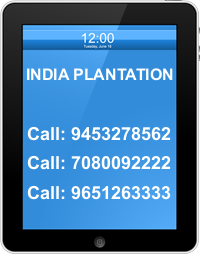|
|
||
| What is a Soil Test? | ||
| A soil test is a process by which elements (phosphorus, potassium, calcium, magnesium, sodium, sulfur, manganese, copper and zinc) are chemically removed from the soil and measured for their “plant available” content within the sample. The quantity of available nutrients in the sample determines the amount of fertilizer that is recommended. A soil test also measures soil pH, humic matter and exchangeable acidity. These analyses indicate whether lime is needed and, if so, how much to apply.In agriculture, a soil test is the analysis of a soil sample to determine nutrient and contaminated content, composition, and other characteristics such as the acidity or pH level. A soil test can determine fertility, or the expected growth potential of the soil which indicates nutrient deficiencies, potential toxicities from excessive fertility and inhibitions from the presence of non-essential trace minerals. The test is used to mimic the function of roots to assimilate minerals. The expected rate of growth is modeled by the Law of the Maximum.Labs, such as those at Iowa State and Colorado State University, recommend that a soil test contains 10-20 sample points for every 40 acres (160,000 m2) of field. Tap wateror chemicals can change the composition of the soil, and may need to be tested separately. As soil nutrients vary with depth and soil components change with time, the depth and timing of a sample may also affect results.
Composite sampling can be performed by combining soil from several locations prior to analysis. This is a common procedure, but should be used judiciously to avoid skewing results. This procedure must be done so that government sampling requirements are met. A reference map should be created to record the location and quantity of field samples in order to properly interpret test results. |
||
| Why Do You Need A Soil Test? | ||
Diagnoses whether there is too little or too much of a nutrient. Promotes environmental quality.
Saves money that might otherwise be spent on unneeded lime and fertilizer. |
||
| Taking a Good Sample | ||
A soil sample must be taken at the right time and in the right way. The tools used, the area sampled, the depth and the correct mix of the sample, the information provided, and packaging all influence quality of the sample.
Take a soil core to the appropriate depth.
For vegetable and flower gardens, sample to the depth that you plan to mix in lime or fertilizer, usually four to six inches. For shrubbery, remove any mulch or surface debris, then sample to a depth of four to six inches around the base of plants. Avoid zones where lime or fertilizer have been recently applied.Mix sample cores well.
Fill out an information sheet and label the sample box completely.
If you just want routine lime and fertilizer recommendations, then fill out a Soil Sample Information Sheet and send it with your samples. If you prefer, you can submit the Soil Sample Information Sheet electronically . If you suspect existing nutritional problems and want the problems diagnosed, complete a Diagnostic Soil Sample Information Sheet instead. Alternately, you can complete the Diagnostic Soil Sample Information Sheet electronically . Give each sample a unique identifier of up to five letters and/or numbers. Put this identifier on both the information sheet and the sample box. Choose an identifier that will help you remember the area it corresponds to, such as FYARD, BYARD, ROSES, or GRASS. Be sure to list the existing plants and/or the plants you are planning to grow. You must include the crop code(s) in order to receive lime and fertilizer recommendations. Codes are listed on the back of the information sheet. Code 024 applies to all vegetable garden crops and 026 to all lawn grasses except centipede grass, which is coded as 022. During December through March, homeowners will be invoiced for peak-season soil fees. Package the sample appropriately.
|
||
| Receiving the Soil Test Report | ||
| Soil samples are usually analyzed within one to two weeks of the time they are received. However, from late fall through early spring, processing may take several weeks due to the heavy sample influx from farmers at this time.When testing is complete, a notification is sent to the homeowner via email and the report is immediately posted on the internet at www.indiaplantation.com www.indiaplantation.com  |
Request a call back
